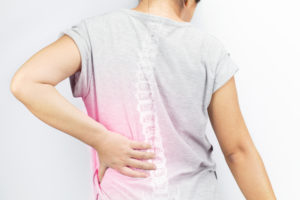 Most people recognize the term “tendon,” but may not know much more than that there are tendons in the body. A tendon is a band of connective tissue that attaches bones to muscles. To fulfill this purpose, it is necessary for tendons to be tough and fibrous. Tendons provide stability to the body’s frame and also a bit of cushioning by acting as springs around relevant structures. One of those structures is the spine. Here, tendons synergize with muscles to facilitate weight-carrying, flexing, extension, and rotation.
Most people recognize the term “tendon,” but may not know much more than that there are tendons in the body. A tendon is a band of connective tissue that attaches bones to muscles. To fulfill this purpose, it is necessary for tendons to be tough and fibrous. Tendons provide stability to the body’s frame and also a bit of cushioning by acting as springs around relevant structures. One of those structures is the spine. Here, tendons synergize with muscles to facilitate weight-carrying, flexing, extension, and rotation.
Inflammation of the Spinal Tendons
Tendonitis, sometimes referred to as tendinopathy, describes inflammation of a tendon or tendons. This inflammation is usually resultant from overexertion or overuse. For example, if you spend a day painting a large room in your home, your back may feel sore and stiff for a day or two. Recovering from inflammation or tendon injury occurs gradually due to the limited blood circulation through this fibrous structure.
Tendonitis is always somewhat concerning, possibly even more so around the spinal column. Tendonitis could cause enlargement of the inflamed tendon and surrounding tissue, which could subsequently cause pressure on a nerve or nerves. Furthermore, spinal tendonitis may be a cause of foraminal stenosis, a condition in which the open spaces around vertebrae become constricted and impinge nerves. Nerve impingement is a leading cause of back spasms, radiating pain, and muscle weakness.
Treating Tendonitis
Back pain that lasts more than a few days should be evaluated. Many people tend to wait to see their doctor for back pain but doing so could lead to worsening of the original problem. A thorough consultation, examination, and use of diagnostic imaging like X-rays or MRI help doctors identify the cause of back pain. Accurate diagnosis paves the way to optimal treatment, which paves the way to restored comfort.
Often, spinal tendonitis can improve with remedies such as rest, anti-inflammatory medication, and hot and cold therapy. Some people improve with chiropractic care. These are ideal and complementary modalities that are preferred whenever possible. In some cases, surgical intervention may be necessary to resolve an underlying problem in the discs, facet joints, or vertebrae of the spine.
We’re happy to help you explore treatment options for back pain. Contact our New York City office at 212-606-1004.

